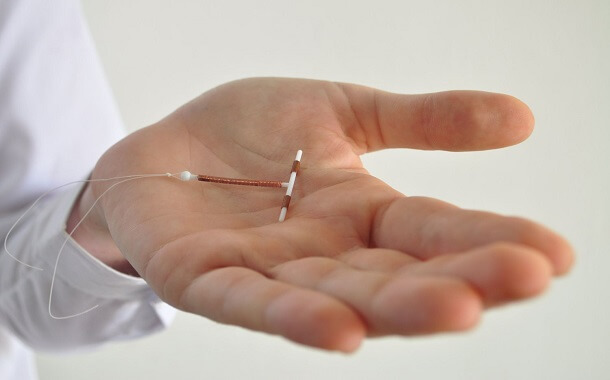How Much Does IUD Removal Cost?
Last Updated on December 27, 2023
Written by CPA Alec Pow | Content Reviewed by ![]() CFA Alexander Popinker
CFA Alexander Popinker
The IUD is an intrauterine medical device whose main role is contraception. This method of contraception is preferred by many women, due to the fact that it can have a duration of use of several years.
IUDs are handled only by the gynecologist, with both the insertion and the extraction being performed by the doctor. An IUD has a fairly high efficiency in preventing the formation of a pregnancy. However, it is only suitable for some women.
How Much Does an IUD Removal Cost?
The cost of having an IUD removed starts from $0 and goes up to $250 and more, depending on the type of intervention.
Many insurance companies, especially those compliant with the Affordable Care Act, cover IUD removal entirely. However, always check for hidden fees or deductibles. If the insurance covers the procedure only partially, you might have a copay ranging from $20 to $50, or more if you haven’t met your deductible.
Public Health Clinics, e.g., Planned Parenthood, handle this procedure based on income. The cost can range from $0, for those who qualify for assistance, to $150 for the removal. Some clinics might offer package deals that include consultation, removal, and follow-up for a combined price, potentially saving patients some money.
At a private doctor’s office, the cost to get your IUD removed is between $150 and $250. Before the removal, there might be a consultation fee, which can range from $50 to $150.
In rare cases, if the IUD has shifted or is embedded into the uterine wall, an ultrasound might be needed to guide the complicated removal. This can add $100 to $500 to the cost.
There are also cases when surgical intervention might be required, which can significantly increase the cost, potentially adding $1,000 or more, depending on the complexity.
Factors influencing the average cost of an IUD removal
The cost of removing an intrauterine device can vary based on several factors like geographical location, healthcare provider, type of insurance, and type of IUD.
- Location: For instance, urban areas with a higher cost of living might charge more than rural areas.
- Healthcare Provider: Some providers might charge more than others. Also, a private clinic might have different rates compared to a public health clinic.
- Insurance: If you have health insurance, it might cover the cost of IUD removal, especially if the removal is medically necessary. In the U.S., under the Affordable Care Act, many insurance plans are required to cover the costs associated with FDA-approved contraception methods, including IUD insertion and removal, without a copayment. However, always check with your insurance provider to understand your coverage.
- Type of IUD: Whether you have a hormonal IUD, like Mirena, Kyleena, or Skyla, or a non-hormonal copper IUD, like Paragard, these will come at different costs, though the difference is typically minimal when it comes to removal.
Additional Costs of IUDs
Some private doctors might recommend a follow-up visit to ensure everything is okay post-removal. This can add another $50 to $100 to the total.
You might also like our articles about the cost of a condom, tubal ligation, or morning-after pills.
If you’re considering replacing the IUD with another form of birth control, there might be additional costs associated with that, such as the price of birth control pills or the insertion of a new IUD.
The process of removing an IUD?
 The IUD removal should only be done by the gynecologist. Otherwise, severe complications such as bleeding or infections may occur.
The IUD removal should only be done by the gynecologist. Otherwise, severe complications such as bleeding or infections may occur.
The procedure for removing the IUD is not complicated and has a short duration. This is done in the gynecologist’s office. The patient is asked to sit in the gynecological chair. The walls of the vagina are removed through the speculum. With thin forceps, the gynecologist will grab the strands of the IUD and pull them lightly until the IUD comes out of the uterus and vagina, respectively.
During the procedure, the patient may feel a slight discomfort. It will disappear when the intrauterine device is extracted.
Recovery
There are situations when the patient has certain symptoms after the extraction of the IUD. Among the most common are:
- low-intensity cramps;
- bleeding;
- infections;
- dysmenorrhea.
These symptoms are transitory, occurring for several days. If these manifestations persist, it is essential to consult the gynecologist.
When using a hormonal IUD, the symptoms may be more numerous. Some of the symptoms associated with the extraction of this type of IUD are:
- headache;
- mood swings;
- nausea;
- sensitivity in the breasts;
- fatigue.
Menstrual disorders may be present in the first months after removal of the hormonal IUD. Over time, everything will return to normal.
If the IUD is kept after the end of the validity period, its efficiency decreases. Therefore, it is important to make an appointment with your gynecologist when the end of the period of use is approaching.
When should an IUD be removed?
The IUD can be removed from the uterus at any time, depending on the patient’s wish or if it expires. Other situations in which the IUD can be removed are:
- the patient wants to get pregnant;
- the patient becomes pregnant;
- infections develop in the genital tract;
- side effects are difficult for the patient to bear;
- the position of the IUD has changed.
It is important to note that the contraceptive effect of this intrauterine device disappears immediately after its elimination.


Leave a Reply
Want to join the discussion?Feel free to contribute!